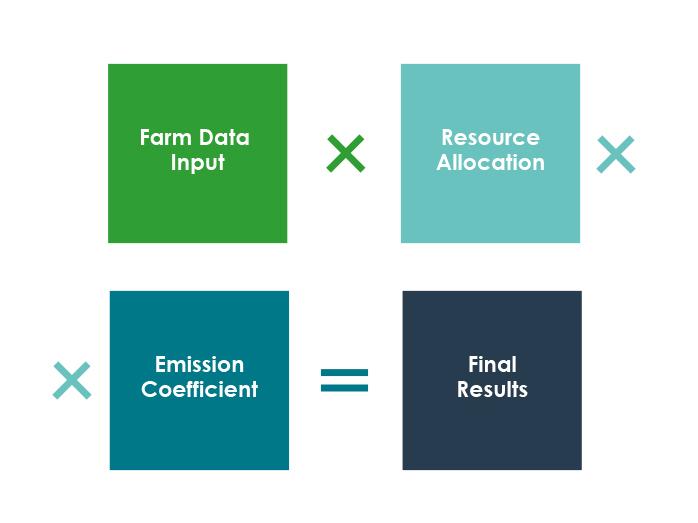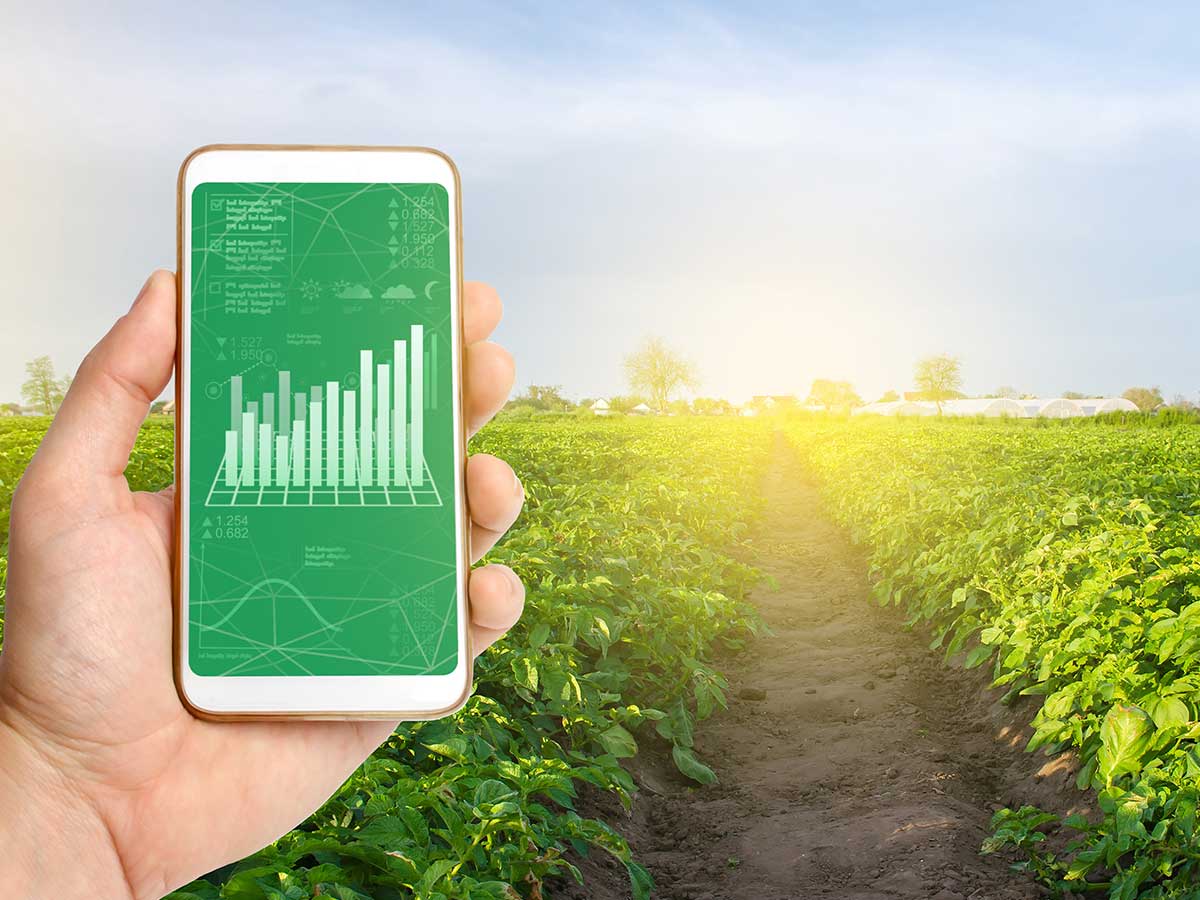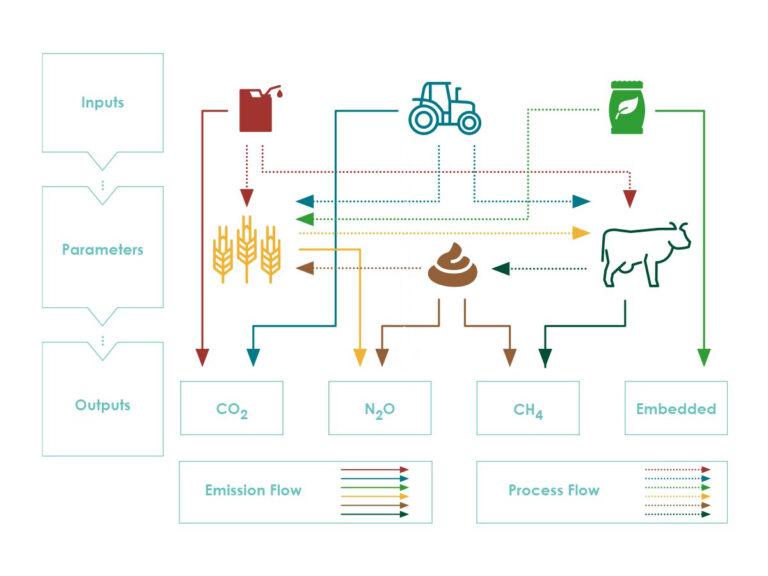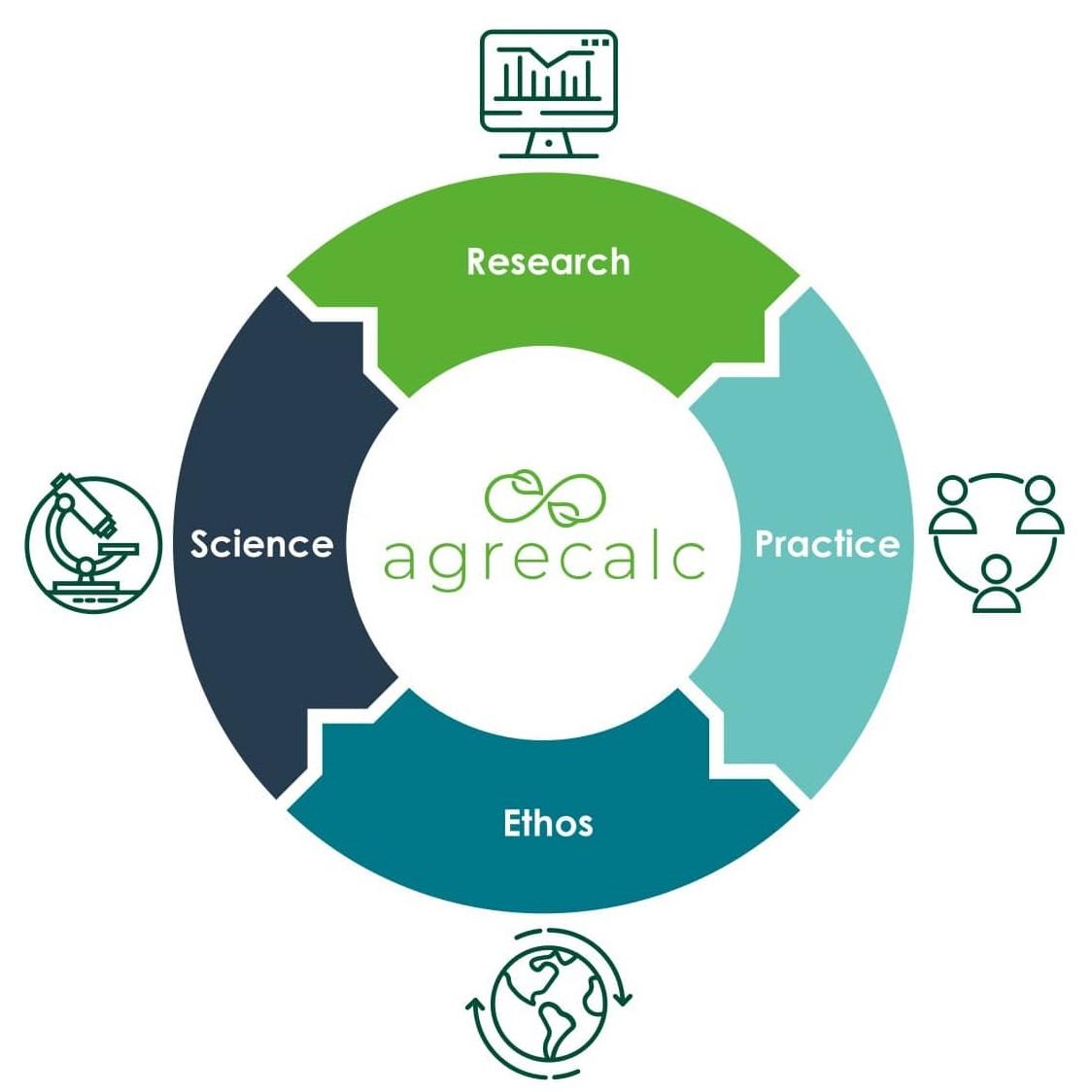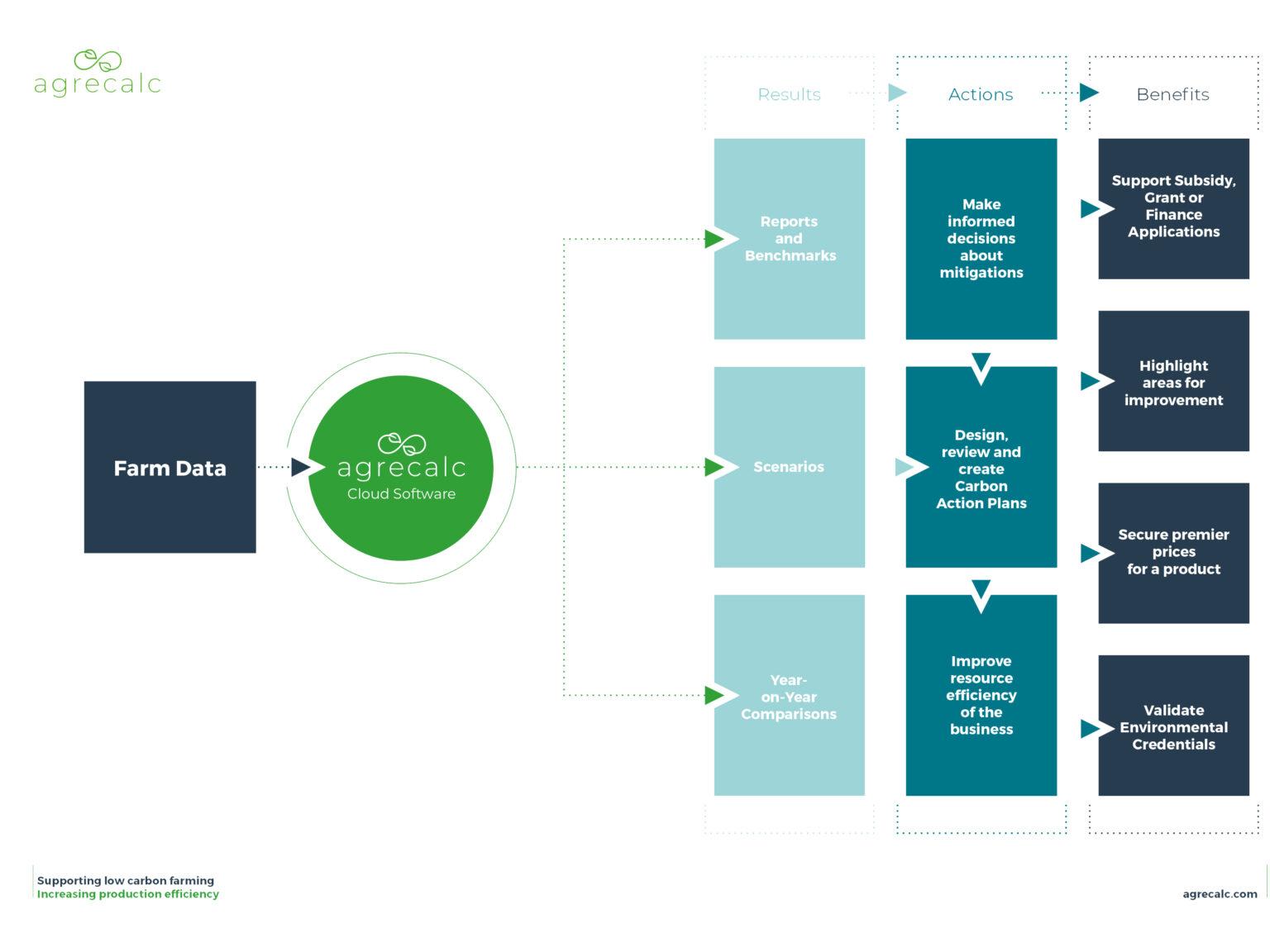Transforming farm data into emissions estimates, carbon sequestration figures and KPIs
The Agrecalc carbon calculator is the backbone of our carbon footprinting service. Our calculation software transforms farm level data into emissions estimates, carbon sequestration figures, and key performance indicators.
The carbon calculator uses equations published by the Intergovernmental Panel on Climate Change and the UK Government to estimate greenhouse gas emissions from all major on-farm and upstream sources, returning these estimates in the form of simple tables and charts.
Agrecalc is based on the life cycle assessment (LCA) framework for evaluating the environmental impacts of products and processes. We calculate all greenhouse gas emissions related to agricultural production, up to the point when final products leave the farm gate, according to the internationally recognised and standardised methodology.
In general, the data used by the Agrecalc carbon calculator can be divided into three categories:
1. Inputs include all information the user provides about their farm system
2. Coefficients include emission factors for the carbon calculations and default data which fills in missing user inputs
3. Outputs include estimates of all major greenhouse gas emissions (CO2, CH4, N2O) from the farm and its products

